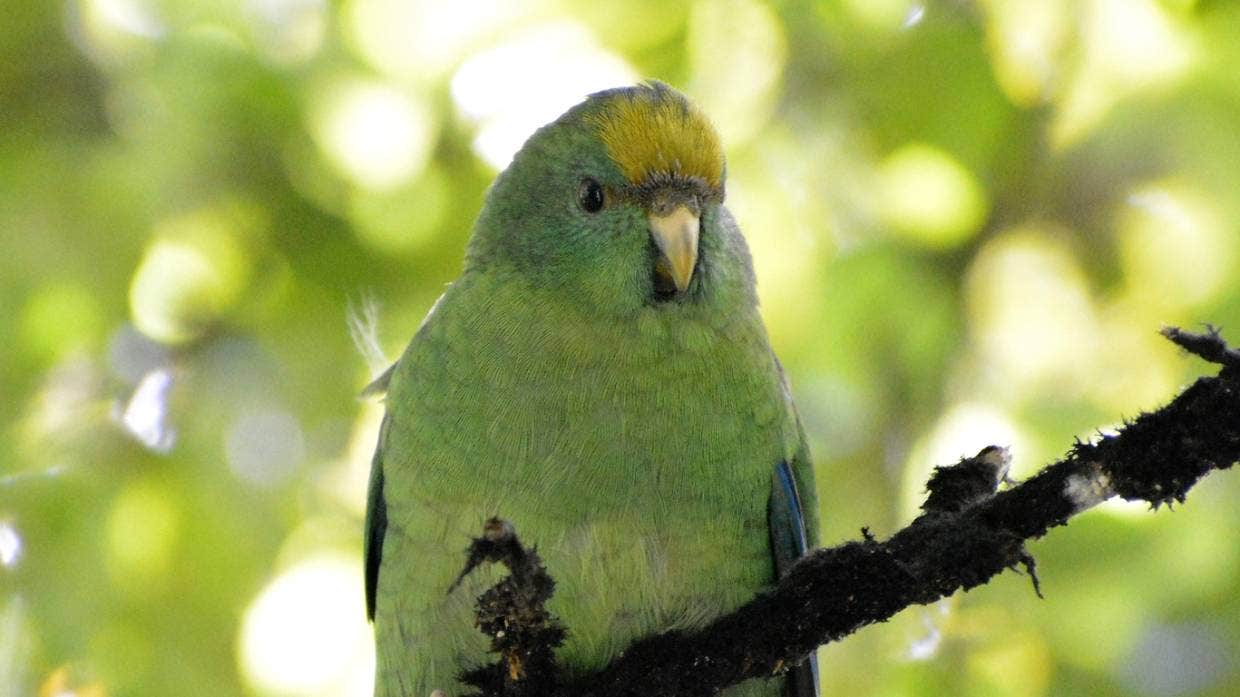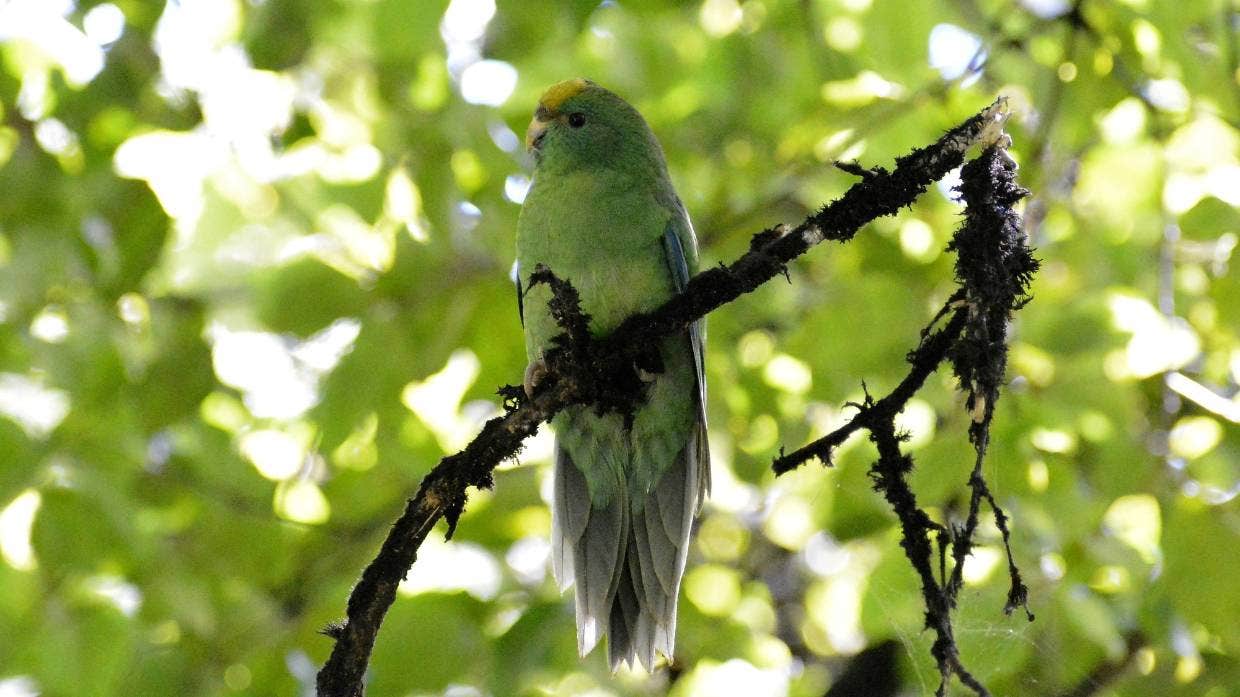Fledgling endangered parakeet spotted at The Brook Waimārama Sanctuary
A kākāriki karaka/orange fronted parakeet fledgling has been spotted in the Brook Waimārama Sanctuary, and is thought to be the first of the species born in the region for 100 years.
Brook Waimārama Sanctuary ecologist Robert Schadewinkel said staff and volunteers were “gobsmacked” when they saw the photo of a fledgling kākāriki karaka, taken by sanctuary volunteer and photographer Sean McGrath.
“We’re so happy.”
As part of the Kākāriki Karaka Recovery Programme, 64 kākāriki karaka had been introduced into the sanctuary in November and December 2021, and February this year.

A fledgling kākāriki karaka/orange fronted parakeet was photographed last week at the Brook Waimārama Sanctuary.
Once endemic to the entire South Island lowlands, it was believed the last time the parakeet was found in the Nelson region was around 100 years ago, Schadewinkel said.
The native parakeet is currently listed as threatened – nationally critical on the DOC website. It is believed only 360 birds are estimated to be left in the wild.
Schadewinkel said the sanctuary mature beech forest was a unique habitat, and one well suited to the parakeets.
With zero predators, the 700ha beech forest provided “perfect conditions” for the bird to breed.
The small species of native parakeet was once so common that “huge flocks” could be seen flying through the air.
Schadewinkel said the kākāriki karaka were “prolific breeders” and could breed continuously all year.
While young parakeet produced three to four eggs, an adult kākāriki karaka could lay 10 to 12 eggs in each clutch.
The reason the bird had become so endangered was due to females nesting in small holes in beech trees, to protect itself and its eggs from predators such as the native owl.
These small holes could not stop stoats and rats when they were introduced to the country, Schadewinkel said.

The bird is believed to be the firstborn in Nelson in approximately a century.
Entire clutches were destroyed, and their mothers killed due to being unable to escape from the holes when attacked.
With no females to breed with, the species headed towards extinction.
Despite this, Schadewinkel said the population of the kākāriki karaka was increasing.
“When were started there were 300 odd birds in the world. Now it’s closer to 500.”

With the parakeet’s fast breeding rate and safe location at the sanctuary, Schadewinkel said they were hoping the kākāriki karaka’s population would continue to increase.
He hoped to one day see flocks of kākāriki karaka fly over Nelson again.
Photographer Sean McGrath said he photographed the fledging on Wednesday, March 16 in the early afternoon, when he saw it in tree three metres away.
He could tell it was a fledging due to the bird not having a band on its feet, as well as its smaller size, pink legs, and developing yellow crest.
He believed the bird possibly had only left its nest one or two days earlier.
Source: Stuff, Frances Chin05:00, Mar 28 2022

This Post Has 0 Comments